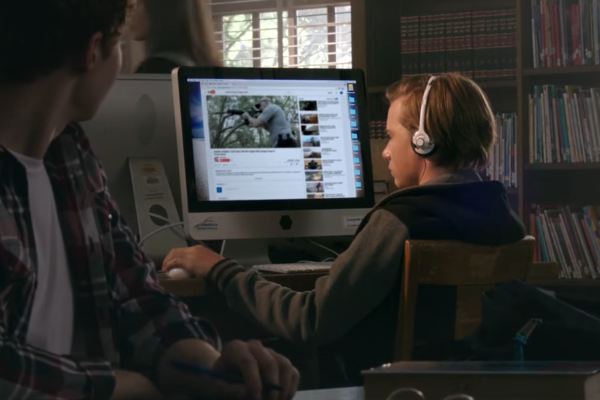Evan’s Story
 |  |
I’d like to thank @JD_Dillon for sharing the Evan video. I just came from TedXLA and empathy was one of the key themes. From technologists to sociologists, from businessmen to philanthropists, all asked and shared experiences on “how we empathize with others and make a difference in other people’s’ lives.” Evan’s video transported me into a real-life situation where we often miss the opportunity to empathize and suffer dire consequences.
Evan’s video is about bringing awareness to the Sandy Hook shooting.
My reflections on Evan’s video brought back to me three reflections
| |
the loss of empathy in learning, | |||
| |
deeper learning needs empathy, | |||
| |
and empathy starts with the way we frame our world. |
Loss of Empathy in Learning
It was Sherry Turkle in her book “Alone, Together” that warned us that a growing number of people, though connected with Internet tools, are apart from each other and that many would replace empathy and warm relations with humans to computers and robots. Although we interact with many people through the Internet simultaneously, we feel isolated and lonely because we do not experience the warmth of genuine friendship that is formed through face-to-face interactions. Turkle shares the story of a girl who became so sad because the toy could no longer talk back to her. Similarly, this a known downside of video gaming.
In the physical world, in training classrooms and in schools like Evan’s school, it is easy not to feel and understand others (see exuberance of learning.) The challenge becomes even severe in online learning and elearning.
eLearning is such a “cold” place. Learners are alone and detached. They are connected with other online learners yet they are still isolated and lonely. They are resigned to the lack of warmth and interaction because this is efficient, faster, cheaper and a time-saver. Of course, there are benefits, yet the absence of the opportunities to empathize diminishes our abilities to learn (Mkrttchian Vardan, 2015).
Deeper Learning Needs Empathy


There are two ways to learn: by copying others and by showing others. Both require the presence of empathy.
We learn by observing and imitating people with whom we identify. For psychologist Albert Bandura, individuals do not automatically observe the behavioral model and imitate it. He believes that some thought prior to imitation occurs and is referred to as mediational processes. This occurs somewhere between observing the behavior (stimulus) and imitating it or not (response). He proposes these processes as 1) grabbing our attention, 2) the retention of such behavior, 3) reproducing the behavior and 4) the motivation to perform such behavior. (McLeod, 2011).
We also learn by teaching or showing others. An ancient Roman stoic philosopher Lucius Annaeus Seneca said that “While we teach, we learn.” When we teach others we do our best to understand the material. We also remember the material as accurately as we can.
The lack or presence of empathy between learner and trainer or between learners dampens or accelerates learning.
Listen to this conversation:
“It is difficult to do this? – Mark
“Not really. I tried it with my boss, and it worked.” – Mary
“Why is it that I fail. What am I missing?” – Mark
“I needed the raise badly due to my son’s medical needs. I had to make it work.” – Mary
There are two levels in this conversation, empathy and knowledge sharing. Learning the knowledge is influenced by the intensity of the empathy between May and Mark.
In designing learning, we want to keep the exchange of feelings, context and meaning going in one level and the transfer of knowledge in one level. One way to do this is to use stories and emotions in elearning design.

In insight sharing, the transfer of knowledge is at the human and person-to-person level. There is a great moment of inspiration and celebration with mutually shared discoveries.
In the case of Evan’s video, we are moved emotionally by the characters while we learn a lesson about empathy. “No one noticed” is a lesson. “Evan looking for the person” is another lesson.”
Empathy Starts with the Way We Frame Our World


Where do we start in encouraging empathy? One method is “framing.”
Evan’s videos use framing as a technique.
Observe the following:






Conclusion
Our capacity to emphatize defines our humanity. As James A. Coan said: “People close to us become a part of ourselves, and that is not just metaphor or poetry, it’s very real” (cited by Fariss Samarrai). Empathy has to do with our perspectives—how we observe, interpret, and act. It has to do with focusing on a given moment in time or focusing on events—“framing”. We can learn and change our frames so if you feel or think that you are unable to empathize, just change your “frames”.
References
How to add the human touch in your eLearning design
An Exuberant discovery for Lonely and Stressed-out eLearners
Vardan, Mkrttchian (2015). Handbook of Research on Estimation and Control Techniques in E-learning
McLeod, Saul (2011). Bandura—Social learning theory
Samarrai, Fariss (Aug. 21, 2013) Human brains are hardwired for empathy, friendship, study shows
Ray Jimenez, PhD
Vignettes Learning
“Helping Learners Learn Their Way”

